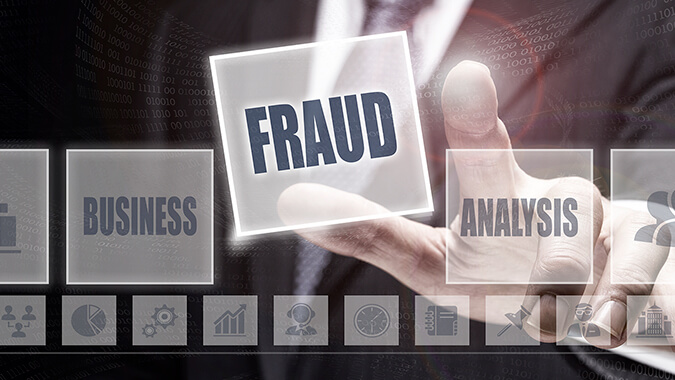
New Credential, Standards Add Value to Valuations
- Published
- Oct 19, 2017
- Share
The New CEIV Credential Makes Its Debut
Companies that issue financial statements in accordance with U.S. GAAP, and users of the financials, would benefit from a more rigorous, consistent, and efficient approach to valuation for financial-reporting purposes.
Now that benefit is at hand, via a new professional credential—along with more uniform standards for performing valuations for financial reporting—created by a group of leading valuation organizations.
The new qualification for professionals who perform fair value measurements for corporate entities and intangible assets is known as the Certified in Entity and Intangible Valuations (CEIV) credential. The CEIV was developed under the guidance of the American Institute of Certified Public Accountants, American Society of Appraisers, and Royal Institute of Chartered Surveyors.
The credential is accompanied by the Mandatory Performance Framework (MPF), a set of guidelines for preparing valuations for financial reporting that details the work required to provide supportable and auditable fair value measurements.
Instilling Confidence
As CFOs, other financial executives, and audit committees are well aware, users of financial statements closely scrutinize the valuation disclosures required under U.S. GAAP. Yet before the CEIV, there was no uniform credential for professionals charged with performing such valuations for financial-reporting purposes.
Thus, a valuation may have been performed by someone with a background in accounting, appraisal, corporate finance, investment banking—or none of the above. Nor was there a common framework detailing the process needed to support valuations. The disparity in valuation credentials and processes has been a matter of concern for the Securities and Exchange Commission.
The CEIV and the MPF should help to improve the consistency of valuations prepared for financial reporting and should eventually facilitate a more efficient audit process. The CEIV was designed to address fair value measurements for businesses, business interests, intangible assets, certain liabilities, and inventory for financial reporting purposes.
The MPF should improve the audit process for all interested parties: valuation professionals, company managements and audit committees, and auditors. For valuation professionals, the framework provides an approach to align the procedures for valuation engagements with client needs, in response to increased scrutiny by regulators. The MPF also offers a resource to help identify and mitigate ineffective, inefficient, or incomplete valuation procedures that result in insufficient support for audit purposes, and should facilitate the valuation review process.
For company managements, audit committees, and auditors, the MPF should promote greater confidence in the valuation professional’s ability to assist the company with reporting requirements, to perform appropriate analysis, and prepare related documentation. It also should lead to a better understanding of the extent to which judgment, estimates, and industry knowledge are utilized in the valuation. Further, it should improve the consistency of documentation provided by valuation professionals.
Strong Requirements
For managers with responsibility for financial statements, and the users of the statements, knowing that valuations were prepared by a professional with an officially sanctioned certification, in compliance with a uniform framework, should minimize differences and uncertainties in interpreting the valuations.
The CEIV’s key requirements are designed to create a body of valuation professionals with demonstrable qualifications. To obtain the CEIV credential, a professional must complete coursework offered by the sponsoring organizations and pass an exam. CEIV candidates also must have a significant number of hours of experience with fair value engagements over a multi-year period, use the guidance standards set forth in the MPF, fulfill continuing education requirements, and undergo a quality review and inspection process of their valuation work.
While only those attaining the CEIV credential are required to adhere to the MPF guidance, all valuation professionals are expected to follow MPF guidance as best practice when preparing fair value measurements for financial reporting.
The MPF is intended to improve the consistency of valuation engagements by requiring valuation professionals to perform an adequate level of work and provide sufficient, appropriate documentation to support a conclusion of value. The MPF comprises four sections:
- Preamble – provides an overview of scope and purpose.
- Valuation Engagement Guidance – provides guidance on documentation requirements for valuation professionals, including scope-of-work and engagement-letter considerations, extent of documentation, and the use of professional skepticism to be applied in the valuation process.
- MPF Glossary – sets forth definitions for relevant terms.
- Authoritative and Technical Guidance – based on authoritative weight, provides a list of relevant accounting standards, auditing standards, valuation standards and other technical guidance.
The MPF includes application guidance (collectively, the MPF documents) on general valuation matters, as well as on scope of work and extent of documentation specific to the most common components of engagements relating to the valuation of businesses, business interests, intangible assets, certain liabilities, and inventory for financial reporting purposes.
This guidance emphasizes consistency in the application of valuation approaches and methods, support for areas and issues that require significant professional judgment, and how to document methods and inputs.
If a CEIV credential holder is engaged by a privately held entity that does not issue financial statements under U.S. GAAP (for example, financial statements issued under special-purpose frameworks), the CEIV credential holder should follow the MPF documents for the engagement. However, if the CEIV credential holder elects not to follow the MPF documents, this fact and the rationale for it must be prominently displayed on the first page of the final valuation report.
The inspection process for the enforcement of compliance with the MPF is being refined by the sponsoring organizations.
Originally published on CFO.com.
What's on Your Mind?
Start a conversation with Michael
Receive the latest business insights, analysis, and perspectives from EisnerAmper professionals.












